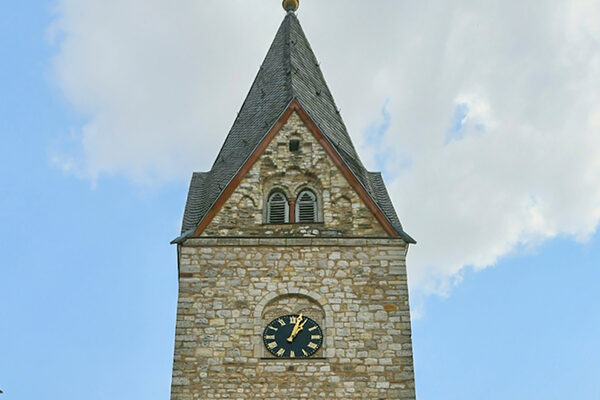Bierstadt: Birgidesstat - a journey through time
Bierstadt can look back on a long and eventful history dating back to the year 927.
Early history and first mention
Archaeological finds prove that the first settlements in the Wiesbaden area already existed in pre-Christian times. The documented history of Bierstadt begins on March 12, 927, when the landlord Alfwin and his wife Ada donated property in Birgidesstat to the Ursula Monastery in Cologne. These included houses, meadows, fields and forests as well as two shares in the church in Bierstadt. The document suggests that a church existed at this time, which indicates an early Christian presence in the village.
The oldest church in Wiesbaden
The Bierstadt church is one of the oldest churches in the Nassau region and is the oldest listed building in Wiesbaden. However, the community suffered badly during the 30 Years' War and only 17 families survived the turmoil of war. Bierstadt converted to the Protestant church in 1550, and Catholics began to settle in the parish again from around 1780.
Further development and initial infrastructure
After the Napoleonic Wars, the community slowly recovered. Around 1830, the road to Wiesbaden was extended and a new schoolhouse was built in 1845/46. The economic development of the neighboring cosmopolitan city of Wiesbaden promoted the local trades. In 1886, the foundation stone was laid for the new town hall, which today serves as the administrative headquarters for five eastern Wiesbaden districts.
In 1899 another school was opened - today's Robert Koch School - and in 1906 the Eagle School, now known as the Hermann Löns School. Finally, in 1910, the municipal streetcar line over Bierstadter Berg to Dotzheim was officially opened.
Wartime and incorporation
The period after the First World War brought Bierstadt economic hardship, French occupation and separatist coups. After long negotiations, Bierstadt was incorporated into the Wiesbaden municipal area in 1928. At that time, the 1,000-year-old municipality had just under 4,500 inhabitants.
Post-war period and expansion
After the Second World War, there was an influx of refugees and displaced persons, who were gradually integrated into the community. New residential areas were built around the old town center. Large areas that had previously been used for agriculture were built on for the American occupation. The "Wolfsfeld" was settled around 1970.
1075 years of Bierstadt
In 2002, Bierstadt was able to look back on an impressive 1075-year history. This anniversary was duly celebrated with numerous festivals and events.
Historical highlight
There was a streetcar in Wiesbaden from 1901 to 1955: It quickly developed into an important means of transportation in the city. Line 7 was extended to Bierstadt in 1910.
